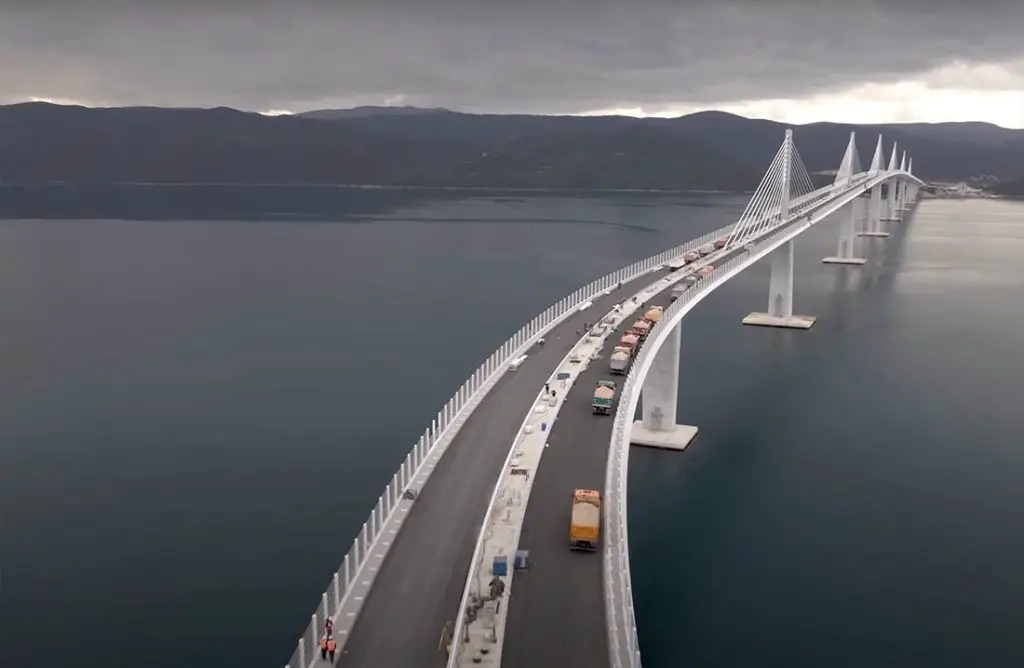It now seems that we can say with confidence that you’ll finally be able to drive across the strategic project at the end of July this year.
Peljesac bridge, which will cut out the need for people driving to and from the extreme south of Dalmatia to cross into neighbouring Bosnia and Herzegovina and then back out again (more precisely through the town of Neum, that country’s only piece of coastline), is often referred to as the most significant project since the declaration of Croatian independence.
As Morski writes, Peljesac Bridge is finally scheduled to open this July, along with most of the access roads which have been taking some time to get completed. An HRT team visited the site to look at what stage the works on the bridge were at and whether they were affected by the recent earthquakes in Bosnia and Herzegovina, which were most felt in the wider Dubrovnik area.
”According to the current plans and dynamics of the works, people will likely be able to drive across Peljesac bridge during the second half of July when the works on the access roads are completed,” said Jeroslav Segedin, the project manager for the Peljesac Bridge – Croatian roads (Hrvatske ceste).
He added that the technical inspection of the bridge has been performed, and that some minor shortcomings were noticed, which have been eliminated over more recent days. As for the bridge itself as a construction, everything is completely finished now, he pointed out. He also referred to the most technically demanding part – the Ston bypass.
”The construction of the bridge near Ston has been set, welded, and now a concrete slab is set to be built. It is expected to take four months, so in October or November these works should also be completed,” he said. Segedin said the recent earthquake in Bosnia and Herzegovina didn’t affect Peljesac bridge or any of the ongoing works and finalisations.
”When calculating the load-bearing capacity and stability of the bridge structure, one of the parameters is the seismic load, which in this case was much higher than what the earthquake was. We were more worried about how the earthquake affected other facilities along the route – viaducts, the Ston bridge, tunnels, which are still in the construction phase and haven’t yet been completed. Fortunately, no damage or indicators were noticed that would suggest that something unexpected may have happened with any of the above,” concluded Segedin.
For more, make sure to check out our dedicated lifestyle section.









